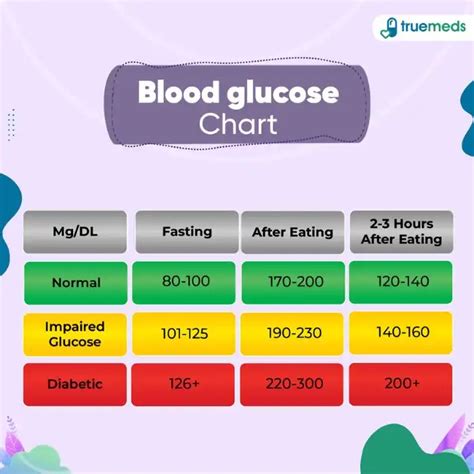Intro
Maintain healthy blood sugar with 5 tips for normal glucose levels, including diet, exercise, and monitoring to prevent diabetes and related health issues like hyperglycemia and hypoglycemia.
Maintaining normal glucose levels is crucial for overall health and well-being. Glucose, a simple sugar, is the primary source of energy for the body's cells. When glucose levels are within a normal range, the body functions optimally, and the risk of chronic diseases like diabetes, heart disease, and certain cancers is reduced. Normal glucose levels are typically between 70 and 140 milligrams per deciliter (mg/dL) after eating and under 100 mg/dL when fasting. Achieving and maintaining these levels requires a combination of a balanced diet, regular physical activity, and a healthy lifestyle. Understanding how to manage glucose levels is essential for preventing the onset of conditions associated with abnormal glucose metabolism.
Effective glucose management involves making informed choices about diet, exercise, and other lifestyle factors. For instance, incorporating foods that are rich in fiber and have a low glycemic index can help slow down the digestion and absorption of glucose, thereby preventing spikes in blood glucose levels. Regular physical activity, such as walking, jogging, or cycling, not only burns glucose for energy but also improves the body's sensitivity to insulin, the hormone responsible for facilitating glucose uptake into cells. Furthermore, maintaining a healthy weight, managing stress levels, and getting adequate sleep are all critical components of a comprehensive approach to glucose management.
The importance of maintaining normal glucose levels cannot be overstated. When glucose levels are consistently high, it can lead to insulin resistance, a condition where the body's cells become less responsive to insulin, making it harder for glucose to enter the cells. Over time, this can result in the development of type 2 diabetes, a condition characterized by high blood glucose levels due to insufficient insulin production or insulin resistance. Moreover, high glucose levels can damage blood vessels and nerves, increasing the risk of heart disease, kidney disease, and nerve damage. Therefore, adopting strategies to manage and maintain normal glucose levels is vital for preventing these complications and ensuring long-term health.
Understanding Normal Glucose Levels

Factors Influencing Glucose Levels
Several factors can influence glucose levels, including diet, physical activity, stress, sleep, and certain medications. Foods high in simple sugars and refined carbohydrates can cause a rapid increase in glucose levels, while foods high in fiber and protein can help slow down glucose absorption. Regular physical activity improves insulin sensitivity, helping the body to more effectively use insulin and manage glucose levels. Stress and lack of sleep can also impact glucose metabolism by increasing the production of stress hormones like cortisol, which can raise glucose levels.Strategies for Maintaining Normal Glucose Levels

Dietary Approaches to Glucose Management
Dietary approaches play a critical role in managing glucose levels. Foods with a low glycemic index (GI), such as whole grains, non-starchy vegetables, and most fruits, are digested slowly, causing a gradual and smaller rise in blood glucose levels. In contrast, foods with a high GI, such as white bread, sugary snacks, and sweetened beverages, are quickly digested, leading to a rapid increase in glucose levels. Additionally, incorporating foods rich in omega-3 fatty acids, such as salmon and walnuts, and antioxidants, such as berries and leafy greens, can help reduce inflammation and improve insulin sensitivity.Physical Activity and Glucose Management

Stress Management and Sleep
Stress and sleep are often overlooked but are critical components of glucose management. Chronic stress can raise glucose levels by stimulating the release of stress hormones like cortisol and adrenaline, which prepare the body for 'fight or flight' by increasing glucose release from stored energy sources. Poor sleep quality and duration can also disrupt glucose regulation by affecting the balance of hormones that control glucose metabolism, including insulin and glucagon. Engaging in stress-reducing activities, such as yoga, meditation, or deep breathing exercises, and prioritizing sleep by maintaining a consistent sleep schedule and creating a relaxing bedtime routine can help mitigate these effects.Monitoring and Adjusting

Seeking Professional Guidance
Given the complexity of glucose metabolism and the numerous factors that influence it, seeking professional guidance is often beneficial. Registered dietitians can provide personalized dietary advice, while certified diabetes educators can offer comprehensive guidance on glucose management, including how to use glucose meters, interpret results, and adjust medication and lifestyle factors accordingly. Furthermore, healthcare providers can monitor overall health, adjust medications as necessary, and provide referrals to specialists if complications arise.Conclusion and Next Steps

What are normal glucose levels?
+Normal glucose levels are typically between 70 and 140 milligrams per deciliter (mg/dL) after eating and under 100 mg/dL when fasting.
How can I maintain normal glucose levels?
+Maintaining normal glucose levels involves a combination of a balanced diet, regular physical activity, stress management, and adequate sleep. It's also important to monitor glucose levels regularly and seek professional guidance when necessary.
What foods are best for managing glucose levels?
+Foods that are rich in fiber and have a low glycemic index, such as whole grains, non-starchy vegetables, and most fruits, are beneficial for managing glucose levels. Foods high in simple sugars and refined carbohydrates should be limited.
In conclusion, managing glucose levels effectively is a long-term commitment that requires patience, dedication, and the right guidance. By adopting healthy lifestyle habits and seeking professional advice when needed, individuals can maintain normal glucose levels, reduce the risk of chronic diseases, and ensure overall well-being. We invite you to share your experiences, ask questions, and explore more topics related to health and wellness in the comments section below. Together, we can build a community that supports and encourages each other in the pursuit of healthy living.
